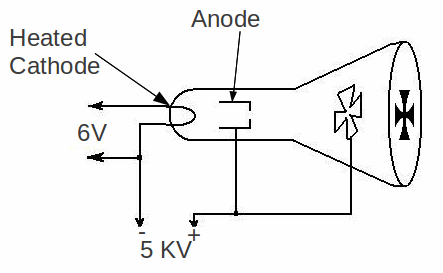The Maltese cross tube demonstrates that when a voltage is applied between a pair of electrodes, particles or radiation of some sort are emitted from the cathode. The tube consists of a heated cathode, which makes it much easier for the rays to be emitted from the cathode, inside a glass tube. The anode consists of a metal cup with a hole, and behind that, a maltese cross against a glass screen.

The rays were called cathode rays, and later shown to be beams of electrons. In fact, the rays can easily be shown to be charged removing the cross and holding a magnet close to the tube. The beam will bend in the magnetic field, and the direction of the bending implies the beam is negatively charged, using Flemings left hand rule.

